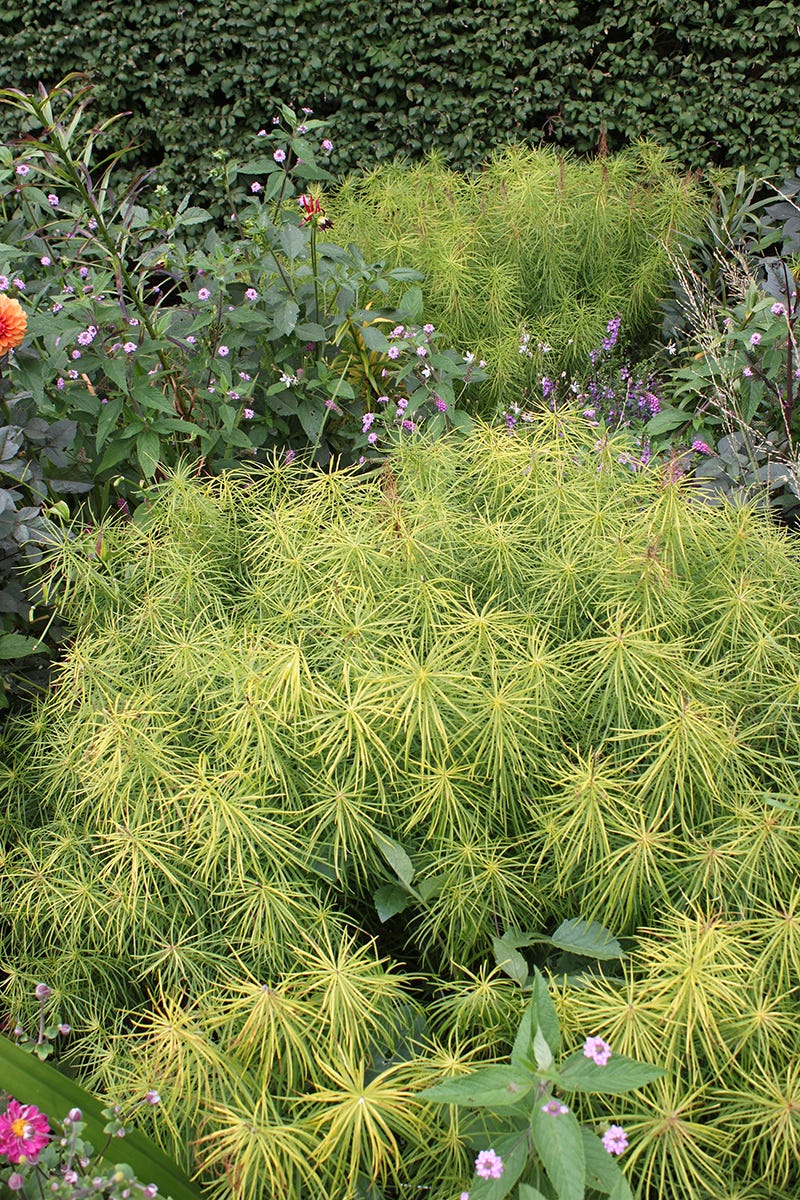Gardentopia is for all garden lovers - I aim to give you lots of info for your garden design endeavors. Please consider subscribing - I try to post something every Wednesday and Sunday!

In my part of the world - New York state - Fall is when Mother Nature shines. The days are shorter, the sun is low in the sky, but the weather stays warm enough for the flowering plants to hang on. The siren call of the garden muse trumpets one last time before she takes her leave. She gives it one last show.
And coincidentally, it is now when people have time to appreciate their grounds. It is too cold for the beach, and graduations and summer parties are a memory. This is when people can stop and savor a garden.
Fall gardens prolong our enjoyment of Nature's gracious gifts. You can revel in the crisp air and clear blue skies, knowing that autumn is, as the 19th- century American poet William Cullen Bryant described, “the year’s last loveliest smile.” Here are some ways to appreciate and celebrate fall gardens.
Blue and Pink Flowers Become Deeper in Color
The interesting thing about the cool weather of Fall is that it deepens the blue color of blue and blue-pink flowers. This makes an autumn flower border pop. Blue annual salvia turns a deep blue as do blue flowers of Tradescantia, Phlox paniculata and many others such as asters, mums, and roses. The reason this happens in cool weather is because plants produce more anthocyanins at lower temperatures. As night temperatures drop below 50 degrees, the leaf color darkens and intensifies. These chemicals act as an anti freeze and also become redder in cool temperatures. Dry weather and sunny weather increase this darkening and reddening effect even more. Thus blue flowers are more intense and red and pink flowers darken.


Japanese Anemone - Windflower - is a Star
One of my 'fave' perennial flowers for fall (in my part of the world) is Japanese anemone. It is an easy to grow perennial with good deer and rabbit resistance. Its dainty flowers are the jewels of the flower world as they gently wave in the cool breeze. The soft pink, slightly cup-shaped flowers of Japanese windflower (Anemone × hybrida ‘Robustissima’) float 3 to 4 feet above mounded foliage in late summer through October. You will need to divide these every few years.

The graceful sprays of Japanese anemone flowers can be blended with other late summer to early fall performers for a sensational display. Try them with sedum ‘Autumn Joy,’ asters, toad lily, coneflowers, goldenrod, and joe-pye weed.
‘Wild Swan’ hybrid anemone is a prolific flowering anemone with huge white flowers from late spring to fall! It is different from Japanese anemones as it is an Anemone rupicola hybrid. It does not reseed and is noninvasive. It grows only 18 inches high and is 16 inches wide.

Kale and Cabbage Come into their Own
Ornamental cabbage and kale are the colorful leafy sentinels of fall gardens. Although they are foliage plants, they rival flowers for their colorful beauty and form in the fall. The term ornamental cabbage refers to varieties with broad, unruffled leaves. The bottom half of their foliage remains green, while the rosettes in the center turn bright purple, pink, or white. The overall effect resembles a huge blossom. Ornamental kale is similar except that the leaves are wavy- edged, deeply ruffled, or curly. They provide a fall finale of color to any setting! Ornamental cabbage and kale are both grown as annuals and are very cold hardy.

They do not require a lot of care— no pinching, pruning, or staking. All they need is the cool weather of fall to develop their best color. This is why ornamental cabbage and kale add such a vibrant punch to cool season flower beds and planters. Pair with asters, dusty miller, mums, ‘Profusion’ zinnias or pansies. Zones 2–11.

Bluestar is a Native, Deer Resistant Perennial
The thread-leaf bluestar (Amsonia hubrichtii) is a three-season perennial performer that features clusters of sky-blue flowers in late spring and finely textured bright green foliage that turns a rich yellow in the fall. The yellow fine foliage is what makes thread-leaf bluestar so stunning in the fall. Bluestar was discovered growing in the wild in the early 1940s. It is native to south-central United States.

Bluestar (Amsonia) was named the 2011 Perennial Plant of the Year by the Perennial Plant Association (PPA). Its fine texture adds an airy effect in the garden - looks lovely when paired with native grass-like Carex appalachica, a weeping perennial sedge that grows in dense mounded tufts. Leaves are deep green and very fine textured. This sedge thrives in dry woods. And both natives are deer resistant!
Berries Appear in Fall
Birds and Fall gardens go together - we need to feed them to get through migration and winter. Berries are not only pretty to view but feed our feathered friends. You can attract a host of hungry birds to your garden in late summer and fall with the fruit of dogwoods (Cornus), crabapples (Malus), elderberries (Sambucus), and viburnum. . Berryscaping is the way to go when you want a birdscape theme. Chokeberry (Aronia arbutifolia) is a native berried plant that holds on to its red fruit over the winter.
Doublefile Viburnum is deer resistant and makes a wonderful tall shrub (can become a small tree) that can be the backdrop in a fall garden. The large white flowers of May turn to red berries in fall. Highly recommended!

This is just a taste of what you can do in a fall garden - this is the best time of year to enjoy an outdoor space, no matter the size. Look for plants that tolerate cool weather and brighten our lives. And don’t forget a birdhouse or two…





